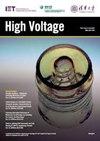Separation Maps for Classification of Multiple Partial Discharges: A Comparative Study Focusing on Time and Frequency Characteristics
IF 4.9
2区 工程技术
Q1 ENGINEERING, ELECTRICAL & ELECTRONIC
引用次数: 0
Abstract
Electrical insulation faults produce partial discharges (PD), which can be analysed to identify specific types of defects. PD clustering is a widely used method to identify PD sources, although its success depends largely on the feature maps used. In this paper, three widely used feature maps, or separation maps, are compared: chromatic, energy wavelet with principal component analysis (EW-PCA), and time–frequency (TF). To compare and evaluate, five scenarios with multi-PD environments with noise were developed. The clustering ability of the maps was evaluated using two performance indicators: intercluster distance and intracluster distance. The results indicate that the EW-PCA map performed the best in all scenarios, correctly identifying the largest number of data points and producing the clearest and most distinct clusters. The TF map created distinct clusters in several scenarios, but not all. The chromatic map created distinct clusters in all scenarios but was not as well defined as the other two separation maps. Given the results, it is important in fieldwork to use a wide range of PD clustering, accompanied by performance metrics that support a less biased decision tailored to the test object.多局部放电分类的分离图:基于时频特性的比较研究
电气绝缘故障产生局部放电(PD),可以对其进行分析以识别特定类型的缺陷。PD聚类是一种广泛使用的识别PD源的方法,尽管它的成功很大程度上取决于所使用的特征映射。本文比较了三种广泛使用的特征映射或分离映射:彩色、能量小波与主成分分析(EW-PCA)和时频(TF)。为了进行比较和评估,我们开发了5种带有噪声的多pd环境。使用两个性能指标:簇间距离和簇内距离来评估地图的聚类能力。结果表明,EW-PCA图在所有场景中表现最好,正确识别了最多的数据点,并产生了最清晰和最明显的聚类。TF映射在几个场景中创建了不同的集群,但不是全部。彩色地图在所有场景中都创建了不同的集群,但不像其他两个分离地图那样定义得很好。考虑到结果,在现场工作中使用广泛的PD聚类是很重要的,并伴随着支持针对测试对象量身定制的较少偏差决策的性能指标。
本文章由计算机程序翻译,如有差异,请以英文原文为准。
求助全文
约1分钟内获得全文
求助全文
来源期刊

High Voltage
Energy-Energy Engineering and Power Technology
CiteScore
9.60
自引率
27.30%
发文量
97
审稿时长
21 weeks
期刊介绍:
High Voltage aims to attract original research papers and review articles. The scope covers high-voltage power engineering and high voltage applications, including experimental, computational (including simulation and modelling) and theoretical studies, which include:
Electrical Insulation
● Outdoor, indoor, solid, liquid and gas insulation
● Transient voltages and overvoltage protection
● Nano-dielectrics and new insulation materials
● Condition monitoring and maintenance
Discharge and plasmas, pulsed power
● Electrical discharge, plasma generation and applications
● Interactions of plasma with surfaces
● Pulsed power science and technology
High-field effects
● Computation, measurements of Intensive Electromagnetic Field
● Electromagnetic compatibility
● Biomedical effects
● Environmental effects and protection
High Voltage Engineering
● Design problems, testing and measuring techniques
● Equipment development and asset management
● Smart Grid, live line working
● AC/DC power electronics
● UHV power transmission
Special Issues. Call for papers:
Interface Charging Phenomena for Dielectric Materials - https://digital-library.theiet.org/files/HVE_CFP_ICP.pdf
Emerging Materials For High Voltage Applications - https://digital-library.theiet.org/files/HVE_CFP_EMHVA.pdf
 求助内容:
求助内容: 应助结果提醒方式:
应助结果提醒方式:


